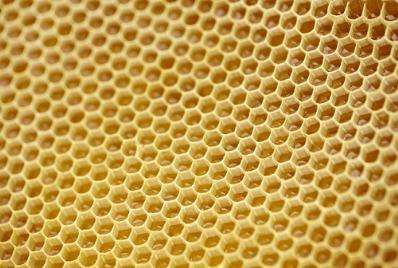The mystery of the hexagonal shape of honeycomb cells has been revealed by simple mechanics.
The honeybee comb is a widely studied natural cellular structure. The rounded hexagonal shape of its cells has intrigued natural scientists and philosophers for millennia. They have suggested many explanations some of which would need the bees to have an uncanny ability ("forethought" according to Pappus of Alexandria in 4 AD) to perform mathematical calculations or the magical quality to measure lengths and angles.
Now research from Cardiff University's School of Engineering, published in Journal of the Royal Society Interface, has found that the cells in a natural honeybee comb have a circular shape at "birth" but quickly transform into the familiar rounded hexagonal shape while the comb is being built.
The research led by Professor Bhushan Karihaloo, Cardiff School of Engineering with co-authors
from Beijing Institute of Technology and Peking University also shows how this transformation takes place.
"People have always speculated how bees have formed these honeycombs," said Professor Karihaloo "There have been some incredible, esoteric, even bizarre explanations; they believed the bees had an uncanny ability to measure angles. But it's actually much more straight-forward."
The answer, according to a new study, is that the cells do not start out as hexagons but as circles. Darwin in fact had suggested this but he had no supporting evidence.
They gradually form into hexagons by a flow of the wax, which is turned semi-molten by the heat from specialist "heater" worker bees. At approx 45°C, the wax starts to flow slowly as an elastic liquid. The wax, softened by the heat, then gets pulled into hexagonal cells by surface tension at the junctions where three walls meet.
Despite solving the mystery the researchers pay tribute to the bees, writing in the study: ""We cannot... ignore, nor can we not marvel at the role played by the bees in this process by heating, kneading and thinning the wax exactly where needed."
More information: Nature doi:10.1038/nature.2013.13398
Journal information: Journal of the Royal Society Interface , Nature
Provided by Cardiff University























